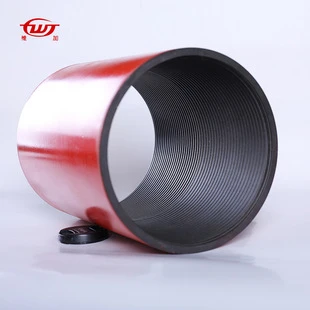well tubing and casing
Well Tubing and Casing Essential Components in Oil and Gas Production
In the oil and gas industry, well tubing and casing play pivotal roles in ensuring safe and efficient extraction of hydrocarbons from underground reservoirs
. These components are integral to the structural integrity, performance, and longevity of a well, catering to both operational efficiency and environmental safety.Casing is a series of steel pipes that are installed in the wellbore after drilling. Its primary purpose is to provide structural support to the underground formation, preventing the collapse of the well. Casing also serves to isolate different geological layers, protecting freshwater aquifers from contamination by hydrocarbons or other fluids. During the casing process, a cement slurry is pumped into the annular space between the casing and the wellbore, securing the casing in place and further enhancing the structural integrity.
The design and installation of casing are critical. Various types of casing, such as surface casing, intermediate casing, and production casing, are utilized depending on the depth and specific conditions of the well. Each type is engineered to withstand different pressures and environmental challenges, with surface casing typically installed first to protect freshwater sources, followed by intermediate and production casings as drilling progresses deeper.
well tubing and casing

Tubing, on the other hand, is installed inside the casing and serves as the conduit for oil and gas to flow from the reservoir to the surface. Made from high-strength steel, tubing must withstand internal pressures generated during production. The design of tubing involves careful consideration of factors such as temperature, pressure, and the chemical compositions of the fluids being transported.
Effective installation of tubing is crucial to ensure a steady flow of hydrocarbons, and it also facilitates the efficient application of artificial lift systems, which are often necessary in oil and gas extraction. Common forms of artificial lift include gas lift and rod pumping, both of which depend on properly installed tubing to function effectively.
In conclusion, well tubing and casing are indispensable elements in the drilling and production of oil and gas. Their correct installation and maintenance not only ensure the safety and efficiency of hydrocarbon extraction but also play a significant role in environmental protection. As the industry continues to evolve, advancements in materials and technologies surrounding well tubing and casing will likely enhance the sustainability and efficiency of oil and gas operations, paving the way for a more responsible resource extraction approach in the future.
-
Tubing Crossover - API Compatible, Custom Sizes, In StockNewsNov.10,2025
-
Tubing Coupling | High-Strength, Leak-Proof Steel CouplingsNewsNov.10,2025
-
Wholesale API Threading Casing Coupling | API 5CT, Fast ShipNewsNov.10,2025
-
Pup Joint Supplier | API Certified, Custom, Quick ShipNewsNov.10,2025
-
Pup Joint Manufacturers | Precision Machined, Fast DeliveryNewsNov.10,2025
-
Tubing Coupling | Precision Steel, Leak-Proof, Fast DeliveryNewsNov.03,2025







